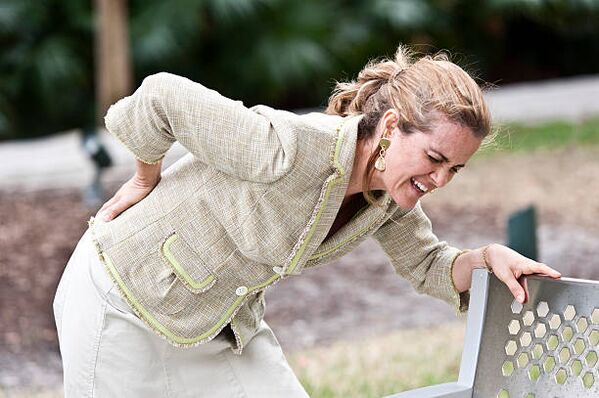
Back pain is reported by 85% of people. How to treat it correctly and is it possible to get rid of the pain once and for all?
Do you have back pain? You're not alone! Data from sociological research shows that back pain is the second leading cause of disability in the adult population after viral infections. She was born with us (according to neonatologists, 80-90% of children suffer from spinal injuries at birth) and sooner or later overtakes everyone. It is believed to be a return on investment for standing walking. Since as a person grows, the load on the "spine" increases, the existing problems of the spine become stronger and stress, anxiety, obesity, overload, a mode of restraint. Sedentary living exacerbates existing problems - and back pain can occur even at an early age. .
What hurts there?
The vast majority (about 95%) of pain is associated with muscles, ligaments, and joints. This is commonly referred to as the back pull. These pains are unpleasant, but not dangerous and in most cases go away on their own within 2-3 days.
3-4% of pain is associated with radiculopathy (radiculitis) - damage to the spinal root. It is usually damaged by a hernia. The pain goes away when the swelling caused by the compression passes.
1-2% of back pain is caused by trauma or inflammatory diseases of the spine, cancer, diseases of the cardiovascular system or gastrointestinal tract, in which the pain syndrome can spread to the back. It is the most dangerous type of back pain. To exclude such pathologies, be sure to consult a doctor.
You can't hesitate
The main indicator that you need medical attention is the regularity of the pain. If you are crooked every now and then - most likely, there is nothing wrong. If a pain of mild or moderate intensity haunts you relentlessly, you can't hesitate. An urgent need to see a doctor if the pain is accompanied by a rise in temperature or the pain syndrome increases during treatment.
At home
The most effective remedy is oral anti-inflammatory drugs. Don't overdo it - they're only safe the first time. With prolonged use, these drugs can cause ulcers and bleeding in the lining of the stomach. Traditional home treatments - nonsteroidal ointments - can only be used as an additional measure. They are harmless, but ineffective. Wearing a corset also relieves: the fixation relieves the spine, relieves spasms and limits sudden movements. Only the corset should be normal - elastic, not heating up.
If the treatment has not been effective within three days, consult a doctor who will block it with injections of anti-inflammatory drugs. By relieving spasms and relaxing the muscles, the pain goes away immediately and often forever.
Forbidden!
Bath and massageunder the strictest ban. They make swelling and pain worse.
Apply to chiropractors for newspaper ads.Manual therapy is an area where there are three hundred charlatans for every specialist. If you really want to find a good doctor, you need to contact certified clinics where certified specialists work.
It is important to immediately determine the correct treatment tactics. This should be done by a neurologist or neurosurgeon. It is dangerous to take care of yourself. 30% of patients in the neurosurgery department tried home treatment methods and ended up in a hospital bed.
Cut or not?
Until recently, a person diagnosed with a hernia was immediately referred for surgery. Today, the operation is carried out only if there are indications:
- persistent pain that cannot be relieved by any pill;
- pelvic function disorder - incomplete emptying of the bladder;
- weakness and numbness in the leg.
All these symptoms make the operation inevitable, because without it the patient can become disabled.
What we risk
The risk of surgery, due to which it is postponed or completely abandoned, is considered by many patients to be grossly exaggerated. In neurosurgery, there are technologies that allow you to accurately calculate the effectiveness of the operation and what symptoms will go away after it, and which will remain.
The probability of recurrence of pain after surgery does not exceed 1 to 1, 5%. Hernias in other places may indeed appear, but this is not a complication, but a spread of the disease, which is often found in young, unruly patients. As soon as the pain subsides, they resume their usual way of life: get behind the wheel, resume training. And it is absolutely impossible to do.
Is osteochondrosis responsible for everything?
Osteochondrosis is a chronic degenerative-dystrophic alteration of the intervertebral space. All people over 25 have signs of osteochondrosis. It is impossible to avoid osteochondrosis, but you can save yourself from its complications, which cause back pain.

















































